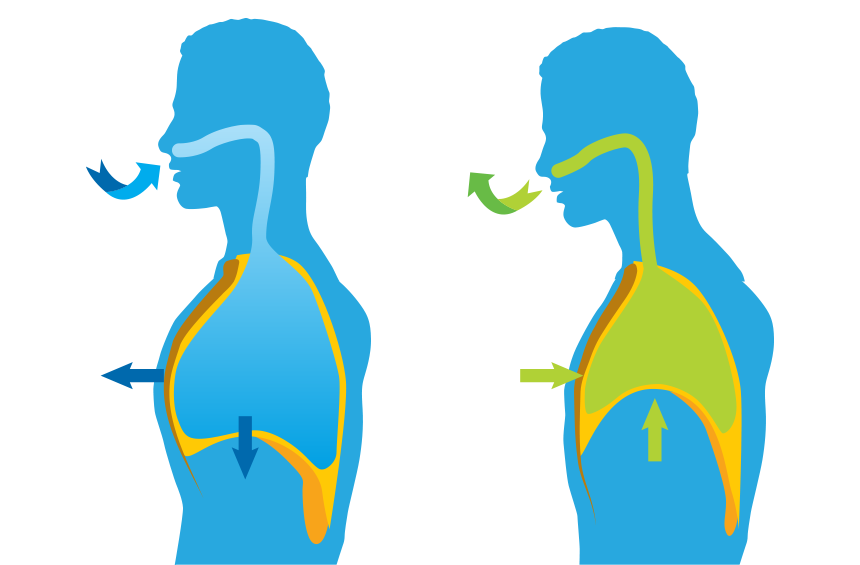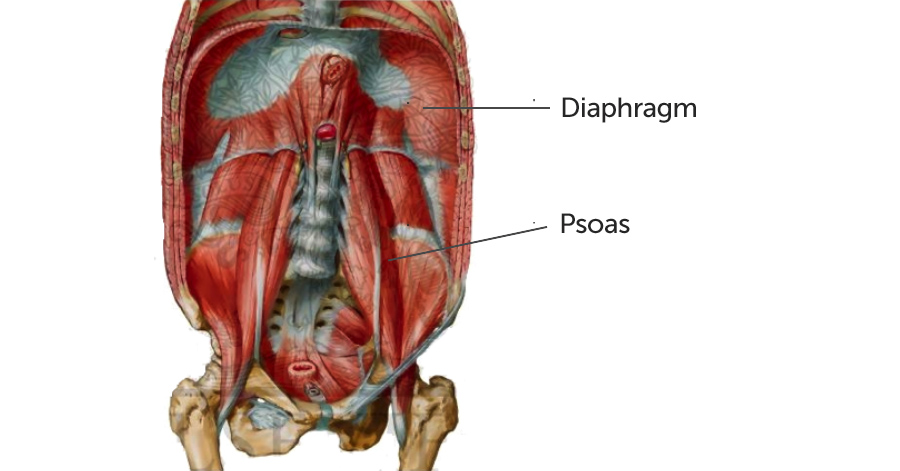Want better athletic performance? Want fewer injuries? Want to walk taller, feel stronger and move more easily in everything you do?
You can have it in a breath. But it’s got to be the right kind of breath.
Your body is a soda can
Ever seen a skeleton stand up by itself? Outside of horror movies, it doesn’t happen. Your individual bones may be strong, but your skeleton as a whole is relatively weak – it will collapse in on itself if you let it. The skeleton needs something else to support it, to keep every bone in the place that it belongs so your body keeps a base of strength. Something has to keep the skeleton in place.
That something is pressure.

Here’s an analogy developed by the brilliant Dr. Mary Massery: Your body is like a can of soda. Aluminum cans have very thin walls; if the can is open and empty, it’s very easy to crush in your hand. But what makes the structure strong and keeps the can straight isn’t the thickness of the aluminum – it’s the pressure inside the can. If the pressure inside the can is about equal to the atmospheric pressure outside the can, the aluminum stays straight and the can stays strong. If you change the pressure – say, by opening and emptying the can – you weaken the whole structure.
Your body is more complicated, but it works on the same principles. There are a couple key pressure cavities in your body: The thorasic cavity in your chest and the abdominal cavity above your legs. You have a built-in pressure regulator for controlling pressure in these cavities and keeping the whole structure strong: A dome-shaped muscle right in between them called the diaphragm.

Here’s a picture of how your diaphragm works. We tend to think about the diaphragm as controlling respiration, but it’s doing even more than that. If your diaphragm is strong, you’re regulating pressure well in your whole body – improving your posture and keeping you strong and balanced. If your diaphragm is weak, so are you.
And there’s a pretty easy way to engage and strengthen your diaphragm: the Be Activated approach to breathing.
Your diaphragm starts up your core
But it gets even better. Not only is the diaphragm your ticket to better posture and stability – it’s your ticket to better movement and flexibility, too.
Meet your psoas. It’s one of the most important muscles in your body, because it’s essential to hip flexion – if your psoas is doing its job, you’re moving, running and jumping with power from your core.
The location of the psoas no accident. It’s just below the diaphragm. Muscle fibers from each are closely connected on similar regions of the spine. When you breathe deeply from the diaphragm, you directly activate your psoas – releasing muscle tension and preparing your body for easier movement.
Posture muscles like the psoas are always “slow twitch”
fiber, which means they require a lot of oxygen to work well. They hold up the body for sustained periods of time with minimal movement. If you’re breathing correctly, they’ll do that job. If you’re not, these muscles’ continuous fight against gravity is impaired.
Breathe right, and you’re reinforcing your body’s core strength with every breath. You’re improving posture and empowering yourself to move well and with less chance of injury. All it takes is a breath.
But it’s got to be the right kind of breath.












Great article!